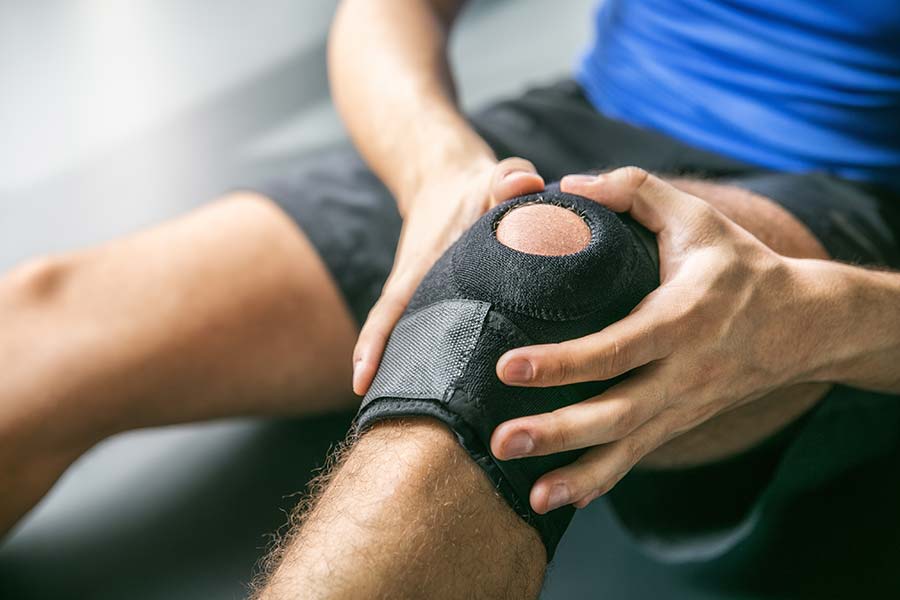5 Things to Consider in Using Pain Meds after a Sports Injury

If you’ve hurt yourself playing a sport, and your doctor or coach suggests pain meds, here are five things to consider before using them.
KILLING PAIN ISN’T ALWAYS THE REAL NEED
Pro and school athletes alike, and even some “weekend warriors” who can’t bear the thought of missing their Saturday pickup games, have fallen into the trap of using painkillers to help them get back onto the field prematurely. Some have gone so far as to take painkillers apart from any real injury, in the hope it will increase their endurance.
Even apart from addiction risks, this is a dangerous approach that risks more physical damage by making it easier to put fresh strain on a muscle that’s not yet properly healed. Plus, even over-the-counter painkillers can have dangerous side effects. And medical science has found .
If you sustain a sports injury, it may just need a cold pack, a bandage and several days of rest followed by easing back into physical activity. Don’t let impatience to “get back into action” keep you from doing what’s best for your health.
KNOW WHAT TYPE OF PAIN YOU’RE DEALING WITH
Many opioids are prescribed for chronic pain—the sort that develops slowly and lasts indefinitely, as with debilitating or terminal illnesses. Sports injuries are more likely to cause acute pain, which is intense and sudden, but usually abates as the original injury heals. Often, the best treatment drugs differ for chronic and acute pain. Sometimes, they also differ depending on what area of the body is affected and how an injury was sustained. Ask your doctor if the painkiller you’re considering is the best choice for your situation.
NOT ALL PAIN MEDS CONTAIN OPOIDS
Mention “painkillers” or “pain medication” and most people automatically think “opioids.” It’s been so since opium was discovered some 5,500 years ago. Whether general opinion sees opioids as miracle pills capable of erasing any pain, or as demonic concoctions luring the innocent into lives of addiction-driven misery, it’s easy to get the impression there’s no other known source of pain relief.
Actually, many other medications, both prescription and over-the-counter, have been and are used to treat various types of pain. Here are a few non-opiate drugs commonly recommended for sports injuries:
- Plain old aspirin (you don’t always need something “special” just because it’s a sports injury).
- Acetaminophen or ibuprofen (ditto).
- Naproxen (similar to ibuprofen).
- Toradol (a prescription anti-inflammatory and anticoagulant drug, frequently used by doctors specializing in sports medicine—best taken with extreme caution, since it can trigger internal bleeding or mask new pain that warns of serious injury).
Medical science is also working on non-addictive opioid formulas that would interact with the brain’s receptors outside of the routes that lead to physical dependence.
EVERY DOCTOR—AND PATIENT—SHOULD BE OPEN TO DISCUSSING OPTIONS AND RISKS IN DETAIL
Besides the specific nature of your injury/pain, and the pros and cons of recommended medications, discuss the following points with your doctor before accepting a pain-med prescription:
- The risks and advantages of leaving the pain unmedicated
- Any other medications you are currently taking
- The rest of your medical history
- Any addiction history in your family (even if a different drug was involved, people prone to one form of addiction are often prone to others)
- Your future plans and goals in sports (again, don’t let eagerness to “get back in the game” affect your judgment)
- If you’re part of a formally organized team and facing the tough choice of taking pain meds or sitting out the season, your options for arranging to return next season and keeping in shape meanwhile (you may need to bring your coach in on the consultation)
If your doctor is too rushed to discuss pain-med concerns in detail—or if you’re dealing with a team physician who seems more concerned about keeping a winning team on the field than doing what’s best for individual players—get a second opinion. And if despite all reassurances, your gut keeps telling you pain drugs, especially opioids or Toradol, are a bad idea—it’s best not to take the chance.
PRESCRIPTION DIRECTIONS MEAN EXACTLY WHAT THEY SAY
Not all addictions can be blamed on winning-obsessed team doctors or other thoughtless prescribers—often, the problem is that someone went outside official prescription boundaries because using the drug as recommended didn’t seem to work “well enough” or “fast enough.” If you do accept a pain prescription, and aren’t satisfied with the results, don’t try to use your own judgment—ask your doctor about possible adjustments. And, once again, make sure you aren’t just getting impatient with sitting on the bench.
In conclusion, a few tips for preventing sports injuries in the first place:
- Always wear your protective equipment—even for an informal practice session with your buddies.
- Warm up with stretches and a slow start, before going all out.
- When you finish a game or round, take a light jog around the court, and/or do a few stretches, to cool down and protect your muscles from the shock of sudden readjustment. Then put on something warm to further ease transition into inactive mode.
- Stay well hydrated—take frequent drinks of water during every game.
- Take an immediate break—no excuses—if you feel pain twinges or dizziness.
- Don’t insist on playing every Take one day a week off from vigorous physical activity.
- Play for fun, not just to win. Reducing emotional pressure will reduce muscle tension that makes you more vulnerable to injury—and will also reduce the “achievement syndrome” that lies behind many drug addictions. Learn to enjoy and cope with life on its own terms, and you’ll lower your addiction risk whatever happens!
If you are concerned for yourself or a loved one getting addicted to opioid pains meds, call our treatment specialists to get a better understanding of your treatment options.

